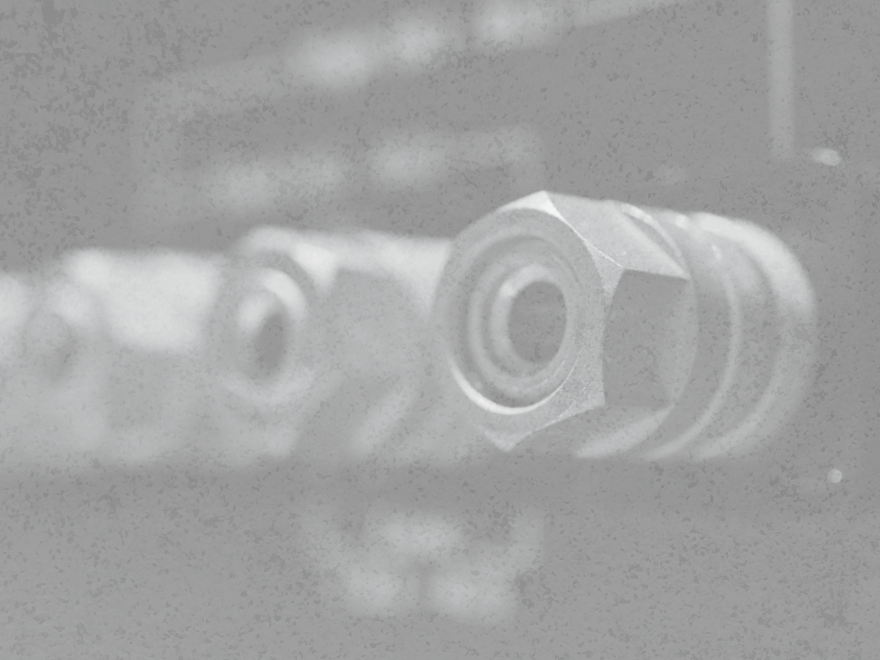If you're looking for perfect high quality audio, then the way your bookshelf speakers are connected to an amplifier can have a significant impact on this. Two popular methods of connection, bi-wiring and bi-amping, offer the potential to improve your listening experience.
Implementing bi-wiring or bi-amping for your bookshelf speakers can potentially improve sound quality by reducing distortion and increasing clarity, but the actual improvement depends on the quality of the equipment used and proper configuration.
This comprehensive guide will explore these techniques and their benefits, with the goal of helping you optimise your bookshelf speaker setup.
Understanding Bi-Wiring and Bi-Amping Bookshelf Speakers
The Concept of Bi-Wiring
Bi-wiring involves connecting a single amplifier to a speaker using two separate cables. The signal path is effectively split between the bookshelf speaker's high-frequency (tweeter) and low-frequency (woofer) drivers.
How Bi-Wiring Works
In a standard wiring setup, a single cable carries both the high and low-frequency signals from the amplifier to the speaker. With bi-wiring, two cables are used, one for each driver, creating separate signal paths for the high and low frequencies. This separation can potentially reduce the interaction between the signals, leading to improved audio performance.
Standard Wiring:
Amplifier -> Single Cable -> Speaker (Tweeter + Woofer)
Bi-Wiring:
Amplifier -> Two Separate Cables -> Speaker (Tweeter + Woofer)
Types of Speaker Cables for Bi-Wiring Bookshelf Speakers
Selecting the appropriate cables for bi-wiring is essential for ensuring optimal audio performance. There are various types of speaker cables to choose from, with different materials, construction, and gauges:
Gauge: 12, 14, or 16-gauge speaker wire, with lower gauge numbers indicating thicker wire
Construction: Twisted pair or braided cables can offer better signal transmission and reduced interference
Material: Oxygen-free copper (OFC) or silver-plated copper for enhanced conductivity and durability
The Concept of Bi-Amping
Bi-amping takes the concept of bi-wiring one step further by using two separate amplifiers, one dedicated to each driver. This approach provides more control over audio performance and allows for more precise tuning.
Passive vs. Active Bi-Amping
There are two types of bi-amping, each with its own benefits and considerations:
- Passive Bi-Amping: Utilises the speaker's internal crossover and two amplifiers. The signal from each amplifier is sent to the respective driver without any additional processing, relying on the speaker's built-in crossover to handle frequency separation.
- Active Bi-Amping: Bypasses the speaker's internal crossover, using an external electronic crossover and two amplifiers. This setup allows for precise control over the crossover frequency and slope, resulting in a more customised audio experience.
Configuring Your Amplifiers for Bi-Amping
When setting up a bi-amped system, it is crucial to configure your amplifiers correctly. Some important steps include:
- Setting appropriate gain levels for each amplifier, ensuring balanced output between the high and low-frequency drivers
- Adjusting crossover frequencies as needed, particularly in an active bi-amping setup
Key Differences Between Bi-Wiring and Bi-Amping
- Bi-wiring uses one amplifier with two separate cables, while bi-amping employs two amplifiers
- Bi-amping provides more control over audio performance and allows for more customization of the sound signature
Benefits of Bi-Wiring Your Bookshelf Speakers
Improved Clarity and Separation
Bi-wiring can lead to improvements in audio clarity and separation by reducing the potential for signal interaction between high and low frequencies. This separation can enhance the overall soundstage and imaging, providing a more immersive listening experience.
Enhanced Frequency Range
By allowing the tweeter and woofer to receive a more focused signal, bi-wiring can result in a more balanced audio reproduction. This separation of frequencies may lead to a more accurate representation of the original recording, delivering a more authentic listening experience.
Reduced Distortion and Interference
Bi-wiring can minimise the potential for electromagnetic interference and signal distortion. By separating the high and low-frequency signals, each cable is less likely to affect the other, resulting in a cleaner audio output.
Case Studies and Testimonials
While individual experiences with bi-wiring may vary, many audiophiles report noticeable improvements in sound quality after implementing this technique. Sharing case studies and testimonials can provide valuable insight into the potential benefits of bi-wiring for different users and systems.
Benefits of Bi-Amping Your Bookshelf Speakers
Increased Power and Dynamics
Bi-amping provides each driver with its own dedicated amplifier, resulting in more power and improved dynamics. This can lead to greater audio detail, stronger bass response, and a more impactful listening experience.
Better Control Over Audio Performance
With two separate amplifiers, bi-amping allows for greater control over each driver's performance. This customization can help optimise audio output for individual preferences, room acoustics, and speaker capabilities.
Customizable Sound Signature
Active bi-amping, in particular, enables precise control over crossover frequencies and slopes. This level of customization can help tailor the sound signature to individual tastes and speaker specifications, resulting in a more personalised audio experience.
Case Studies and Testimonials
As with bi-wiring, user experiences with bi-amping can vary. Sharing case studies and testimonials can provide insight into the real-world benefits and challenges associated with bi-amping, helping potential users make informed decisions.
Choosing the Right Equipment for Bi-Wiring and Bi-Amping Your Bookshelf Speakers
Selecting the Appropriate Speaker Cables
To ensure optimal performance, it is essential to choose the right speaker cables for bi-wiring or bi-amping. Consider factors such as gauge, construction, and material to find the best match for your system and preferences.
Identifying Compatible Amplifiers
Not all amplifiers are suitable for bi-amping, so it is crucial to research and select models that support this technique. For active bi-amping, an electronic crossover will also be required.
Evaluating Bookshelf Speaker Models
Some bookshelf speaker models are better suited to bi-wiring or bi-amping than others. Look for models with dual binding posts and compatible impedance ratings to ensure a seamless integration with your chosen connection method.
When choosing speakers it's important to note that active speakers have built-in amplifiers and often include an active crossover. This means the amplification and crossover components are tailored to the specific drivers in the speaker. Because of this, bi-wiring or bi-amping active bookshelf speakers is not generally possible or necessary.
Recommendations and Best Practices
Consulting expert recommendations and best practices can help you select the right equipment and optimise your bi-wiring or bi-amping setup for the best possible audio performance.
Step-by-Step Guide to Setting Up Bi-Wiring and Bi-Amping Bookshelf Speakers
Bi-Wiring Setup Process
- Verify that your speakers have dual binding posts
- Choose the appropriate speaker cables
- Connect one cable to the amplifier's output and the speaker's high-frequency (tweeter) binding post
- Connect the second cable to the amplifier's output and the speaker's low-frequency (woofer) binding post
- Repeat the process for the other speaker.
Bi-Wiring Speakers Diagram

Bi-Amping Setup Process
- Ensure that your amplifiers and speakers are compatible with bi-amping
- For passive bi-amping, connect each amplifier to the corresponding high-frequency and low-frequency binding posts on the speaker
- For active bi-amping, connect the preamplifier output to the electronic crossover. Then connect the crossover's high-frequency output to the tweeter amplifier. Finally connect the low-frequency output to the woofer amplifier.
- Adjust gain levels and crossover settings as needed for a balanced output
- Repeat the process for the other speaker
Bi-Amping Speakers Diagram

Troubleshooting Common Issues
- Check all connections and cables for proper placement and secure fit
- Verify that amplifier settings are properly configured for bi-wiring or bi-amping
- Ensure that speaker impedance ratings are compatible with the chosen amplifiers
- Consult manufacturer guidelines and user manuals for additional troubleshooting steps
Frequently Asked Questions About Bi-Wiring and Bi-Amping
Does Bi-Wiring or Bi-Amping Work for All Bookshelf Speakers?
Not all speakers are compatible with bi-wiring or bi-amping. Speakers must have dual binding posts to accommodate these connection methods. Always consult the speaker's specifications and user manual to determine compatibility.
Are There Any Disadvantages to Bi-Wiring or Bi-Amping?
The primary disadvantages of bi-wiring and bi-amping are increased complexity and cost. These methods require additional cables, and bi-amping necessitates additional amplifiers or an amplifier with multiple channels. While the potential benefits can be significant, the costs can soon mount up.
How to Determine If Your System Is Suitable for Bi-Wiring or Bi-Amping?
To determine if your system is suitable for bi-wiring or bi-amping, consider factors such as speaker compatibility, available amplifiers, and budget. Researching expert recommendations and consulting user manuals can also provide valuable guidance.
Can I Use Both Bi-Wiring and Bi-Amping at the Same Time?
While it is technically possible to use both bi-wiring and bi-amping simultaneously, doing so may not offer additional benefits compared to using just one method. It is generally recommended to choose either bi-wiring or bi-amping based on individual preferences and system requirements.
Does bi-amping improve sound quality?
Bi-amping, if implemented correctly, can potentially improve sound quality. This is by separating the signal into different frequency bands and sending them to different amplifiers. Each amplifier can better handle the specific frequencies it is designed to handle. The result can be less distortion, greater dynamic range, and improved clarity.
Can bi-amping damage speakers?
Bi-amping in itself is unlikely to damage speakers. However, not having the correct amplifier and speaker match, or an incorrect configuration could potentially lead to damage.
How much difference does bi-wiring make?
The difference that bi-wiring makes is debatable and depends on several factors such as the quality of the equipment, the speakers being used, and the listening environment. Bi-wiring can potentially reduce the resistance in the speaker cables and improve the overall clarity of the sound.
Does bi-wiring use more power?
Bi-wiring does not use more power than a single set of speaker cables. The power consumption is determined purely by the amplifier and the speakers, it is not affected by the number of cables used.
Conclusion
Bi-wiring and bi-amping can provide significant benefits for bookshelf speaker performance, including improved clarity, enhanced frequency range, increased power, and better control over audio output.
By understanding how these wiring methods work you'll have the knowledge to carefully choose the right equipment, to give you the best listening experience possible.
A finishing thought is don't be afraid to experiment with your setup, by trying different configurations and components to get the best sound possible.



Share:
A Guide to Choosing and Setting Up Bookshelf Speakers For Small Spaces
How Do Floorstanding Speakers Work?